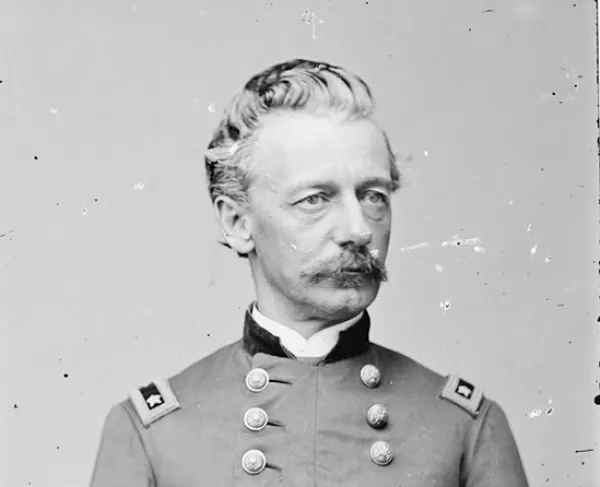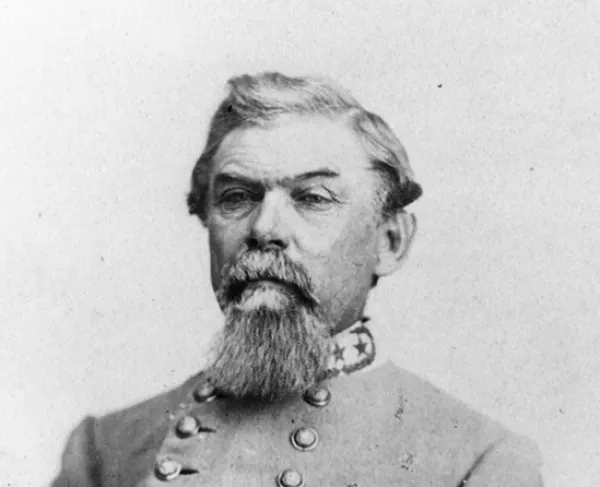
Averasboro
Averasborough
Harnett County and Cumberland County, NC | Mar 16, 1865
Major General William T. Sherman remained active following the fall of Atlanta. Once his armies were reorganized, Sherman and his armies cut a swath across Georgia during his March to the Sea. The march destroyed Georgia’s capacity for making war by inflicting more than $100 million in damages. The city of Savannah was offered to President Lincoln as a Christmas gift. Next, Sherman and his armies unleashed their wrath upon the birthplace of secession: South Carolina. The state capital of Columbia was burned, railroads and rolling stock destroyed, and throngs of slaves freed. The Confederate forces in the Carolinas could do little to slow Sherman.
By March of 1865, the overall Confederate command in this region (two military departments) fell once again on the shoulders of Gen. Joseph E. Johnston. Jefferson Davis was reluctant to restore Johnston, but with the Confederacy shrinking by the day, Davis had little choice. In turn, Johnston knew that there was little that he could do to stop Sherman on his own. He determined to gather all of the Confederate forces he could muster—including the smashed ruins of John Bell Hood’s army—and then move north toward Robert E. Lee and the besieged rebel armies around Richmond and Petersburg. The combined weight of Confederate arms would hopefully be enough to thwart the Yankees.
Sherman’s armies moved in two wings as they drove north through North Carolina. The left-wing moved toward the state capital at Raleigh, while the right-wing drove toward the road junction at Goldsboro, NC.
On the afternoon of March 15, 1865, Sherman's cavalry screen under Brig. Gen. Hugh Judson Kilpatrick came up against Lt. Gen. William Hardee’s corps, consisting of two infantry divisions commanded by Brig. Gens. William B. Taliaferro and Lafayette McLaws, and a division of cavalry under Maj. Gen. Joseph Wheeler. The Confederates were deployed across the Raleigh Road near Averasboro, 40 miles south of Raleigh. Hardee’s orders were to delay Sherman’s 25,000-man left-wing of Maj. Gen. Henry W. Slocum so that Johnston could consolidate his remaining forces to defend the road networks connecting Raleigh and Goldsboro. Hardee posted his 6,000-man corps in a well-chosen position astride the road, with the Cape Fear River anchoring his right flank and the Black River swamps to the east anchoring his left.
After reconnoitering the Confederate defenses, Kilpatrick withdrew and called for infantry support. During the night, two divisions of the Brig. Gen. Alpheus Williams’s XX Corps arrived to confront Hardee’s men arrayed across the plantation of the John C. Smith family. At dawn on March 16, Williams’s infantry advanced against McLaws’s division on the Confederate left and drove back the rebel skirmishers but was stopped by the main Confederate line and a sharp Rebel counterattack. Around mid-morning, Williams renewed his advance with reinforcements on his left and drove Taliaferro’s Confederates from two lines of works but was repulsed upon reaching a third line of defenders. Late that afternoon, two divisions from Maj. Gen. Jefferson C. Davis’s Union XIV Corps arrived on the field and attempted to flank the Confederate right where they were stopped with significant casualties by Wheeler's dismounted cavalry. Sporadic fighting continued into the evening with little result.
Around 8:30 p.m., Hardee withdrew from the battlefield and retreated north toward Smithfield, leaving his campfires burning to conceal his departure. The penultimate battle for the Carolinas set the stage for Sherman’s and Johnston’s last major battle of the Civil War at Bentonville.
Averasboro: Featured Resources
All battles of the Carolinas Campaign
Related Battles
25,000
5,400
682
865














